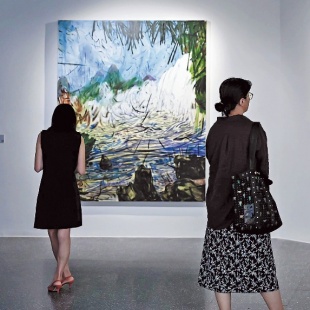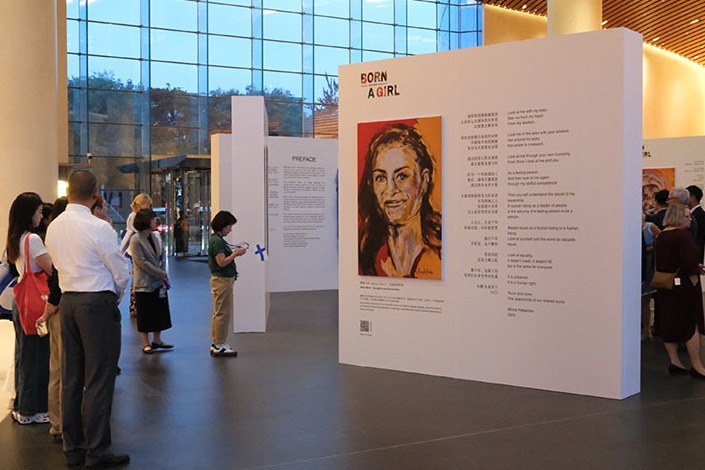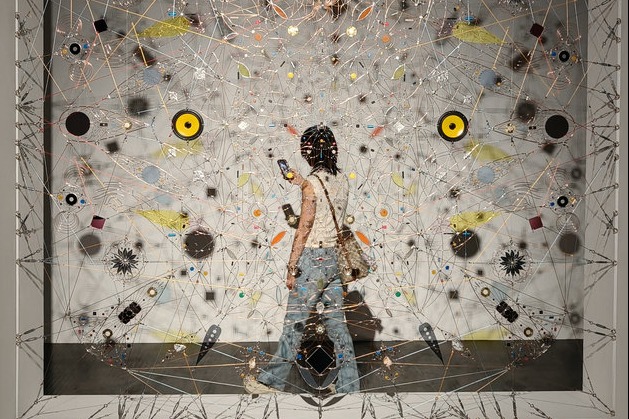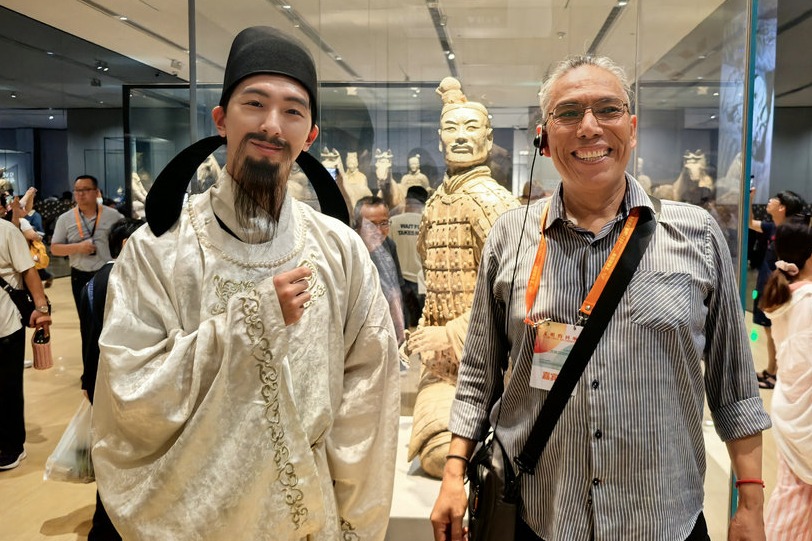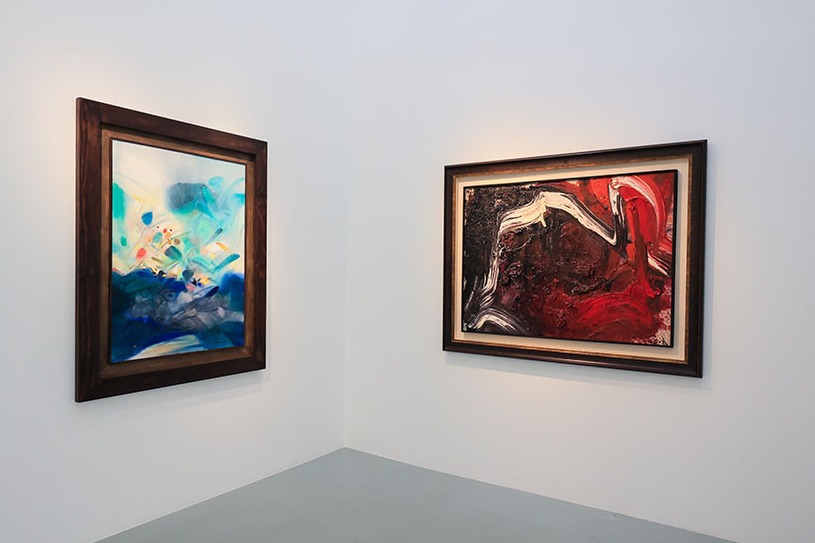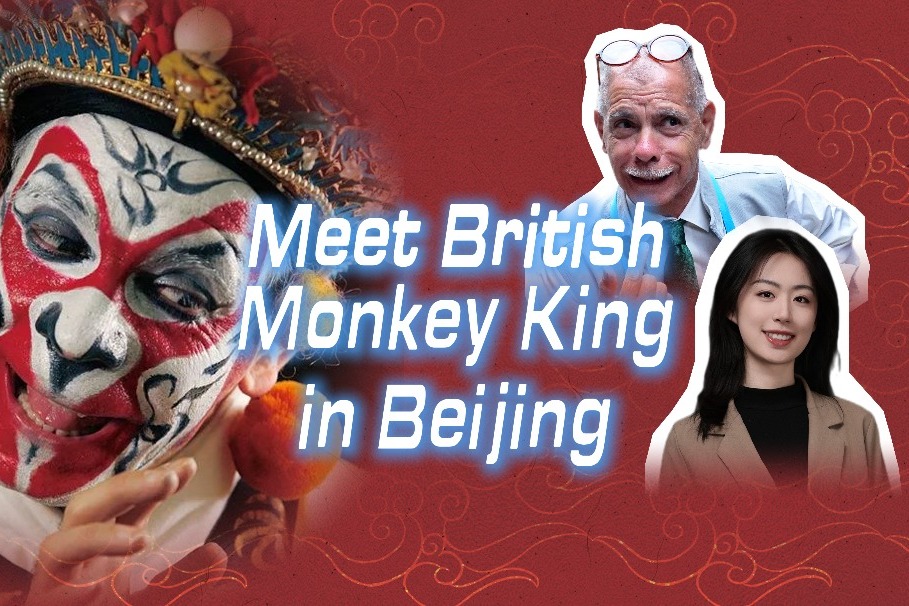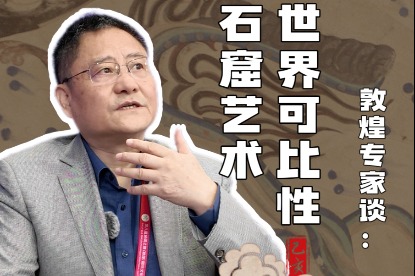Showcasing women's perspectives through Chinese and Spanish artists

Spanish artist Sonia Navarro presents STIRPA I, an installation made of dyed esparto and wood in the Versatile Tradition chapter. Esparto is a native plant of the Mediterranean region. The art of weaving with esparto fiber is an ancient craft dating back thousands of years.
In southeastern Spain's Valencia countryside, esparto weaving was one of the few things the older generation of women could make an income from, Navarro says. They made baskets, rugs and shoes with the flexible fiber obtained from the dried leaves. However, the tradition is now dying out. In 2019, the Spanish Ministry of Culture declared esparto tradition as an intangible cultural heritage.
By working with the traditional craft, Navarro hopes to keep its memory alive and protect its heritage.
Chen Shan, a visitor at the opening and a photographer, shares with the Spanish artist that similar grass weaving crafts are found in China. "Someone has to find new uses for traditional crafts. This is the only way to keep the beautiful heritage alive in the modern world," she says.
To celebrate the 20th anniversary of the establishment of the comprehensive, strategic partnership between China and Spain, Jiushi Art Museum kicked off the Spanish Arts Festival on the Bund in June. In addition to the opening of Balada Del Ouroboros, five exhibitions have taken place in four historical buildings on the Bund.
Three other exhibitions are still ongoing, two of which highlight Antoni Gaudi (1852-1926), the legendary Catalan architect. Splendor to Nature: Gaudi with His Era will run till Oct 8 at Bund 18 Jiushi Art Gallery, and Splendor Immerses Everything: Sound of Gaudi is ongoing at Jiushi Art Salon on 230 Beijing Road East.
Art Masters: A Virtual Reality Experience, featuring five masterpieces from the collection of the Prado Museum in Madrid, is running at the Shanghai Jiushi International Art Center till Oct 12.


